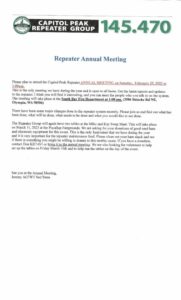Tad Cook, K7RA, of Seattle, Washington, reports for this week’s ARRL Propagation Bulletin, ARLP004:
From the first week of 2023, we saw a dramatic and welcome increase in solar activity, but it softened in this reporting week, January 19 – 25.
Average daily sunspot numbers for the weeks starting with the final reporting week for 2022 were 96.1, 97, 135.9, 173.4, and 162.
Over the same period, average daily solar flux was 143.8, 157.8, 181.2, 221.8, and 198.9.
The northern hemisphere winter solstice was more than a month ago, and through the next two months we will see a gradual transition toward spring conditions.
Predicted solar flux over the next month shows values peaking near 205 on February 14 – 15. Predicted numbers are 170 and 165 on January 26 – 27; 160 on January 28 – 31; 165, 170, 180, and 185 on February 1 – 4; 190 on February 5 – 6; 195 on February 7 – 12; 200 on February 13; 205 on February 14 – 15; 200 on February 16 – 18; 195, 200, and 190 on February 19 – 21; 185 on February 22 – 23; 180 on February 24 – 25, and 175 on February 26 – 28. Flux values may peak above 200 again after March 10.
Predicted planetary A index, an indicator of geomagnetic instability, is 10 on January 26; 8 on January 27 – 29; 5 on January 30 through February 1; 8 on February 2; 5 on February 3 – 6; 12 on February 7 – 8; 15, 12, and 5 on February 9 – 11; 8 on February 12 – 13; 5 on February 14 – 17; 8, 10, 10, 12, and 10 on February 18 – 22; 8 on February 23 – 25, and 5 on February 26 – 27.
More dramatic solar warnings.
https://bit.ly/3XGqNm
Sunspot numbers for January 19 – 25, 2023, were 166, 197, 194, 166, 144,
127, and 140, with a mean of 162. The 10.7-centimeter flux was 226.1, 217.5,
208.7, 198.6, 189.1, 180.2, and 171.8, with a mean of 198.9. Estimated
planetary A indices were 7, 6, 17, 9, 7, 4, and 7, with a mean of 8.1. Middle
latitude A index was 6, 4, 11, 7, 5, 3, and 5, with a mean of 5.9.
Send your tips, questions, or comments to k7ra@arrl.net.
A comprehensive K7RA Solar Update is posted Fridays on the ARRL website. For more information concerning radio propagation, visit the ARRL Technical Information Service, read “What the Numbers Mean…” and check out the Propagation Page of Carl Luetzelschwab, K9LA.
A propagation bulletin archive is available. For customizable propagation charts, visit the VOACAP Online for Ham Radio website.
Share your reports and observations.

